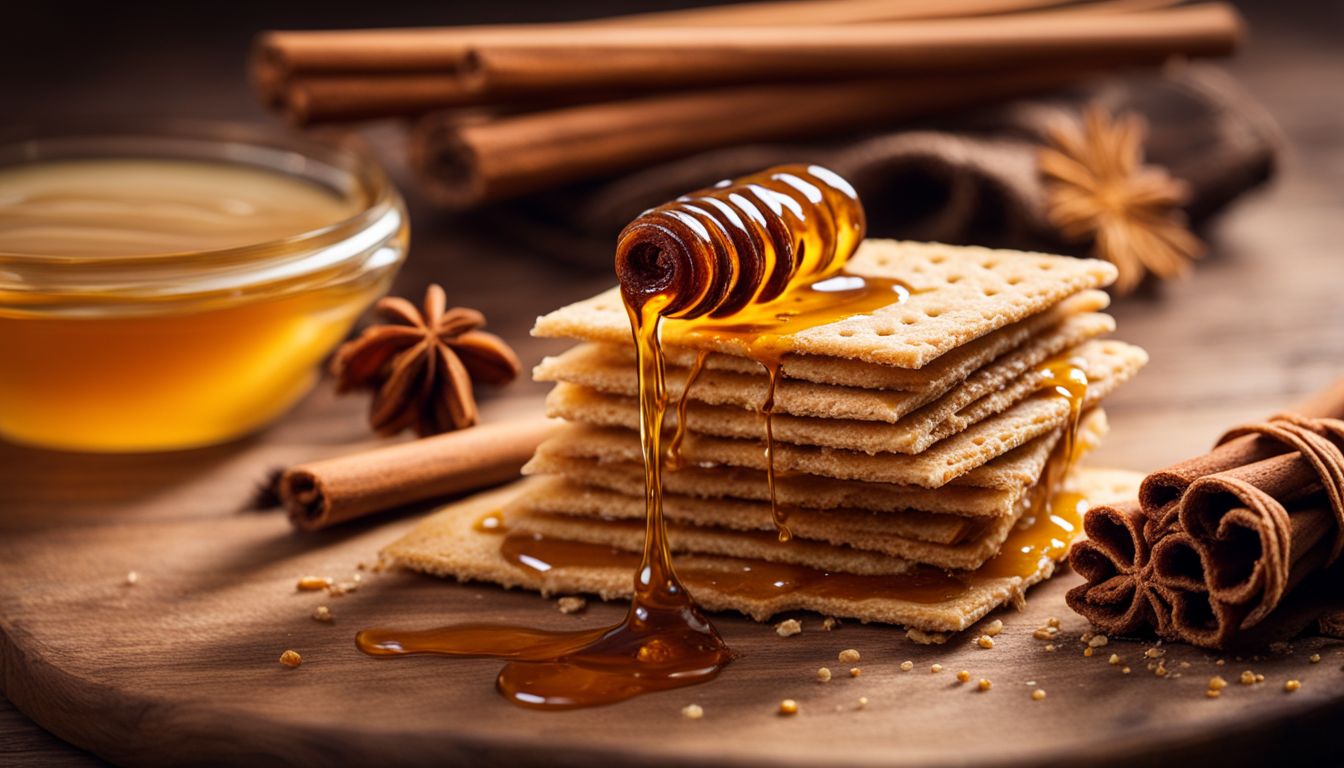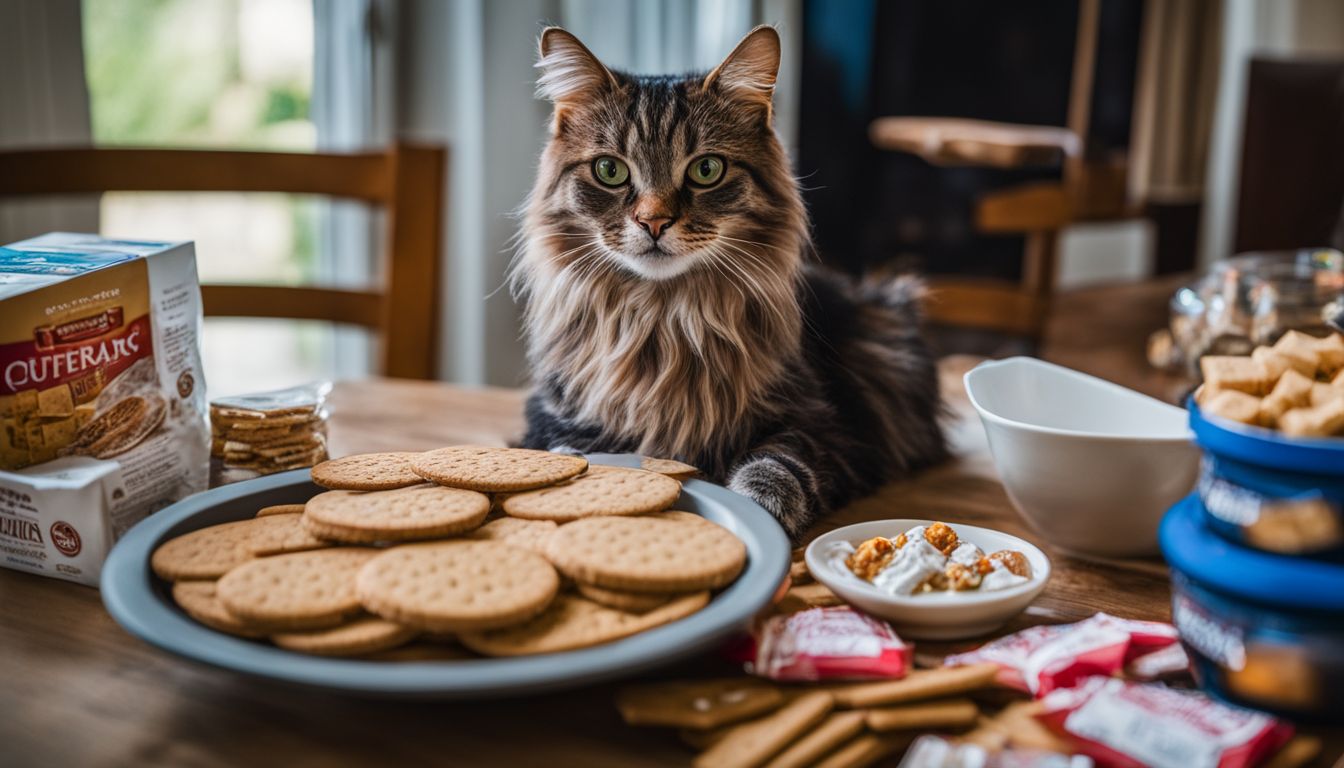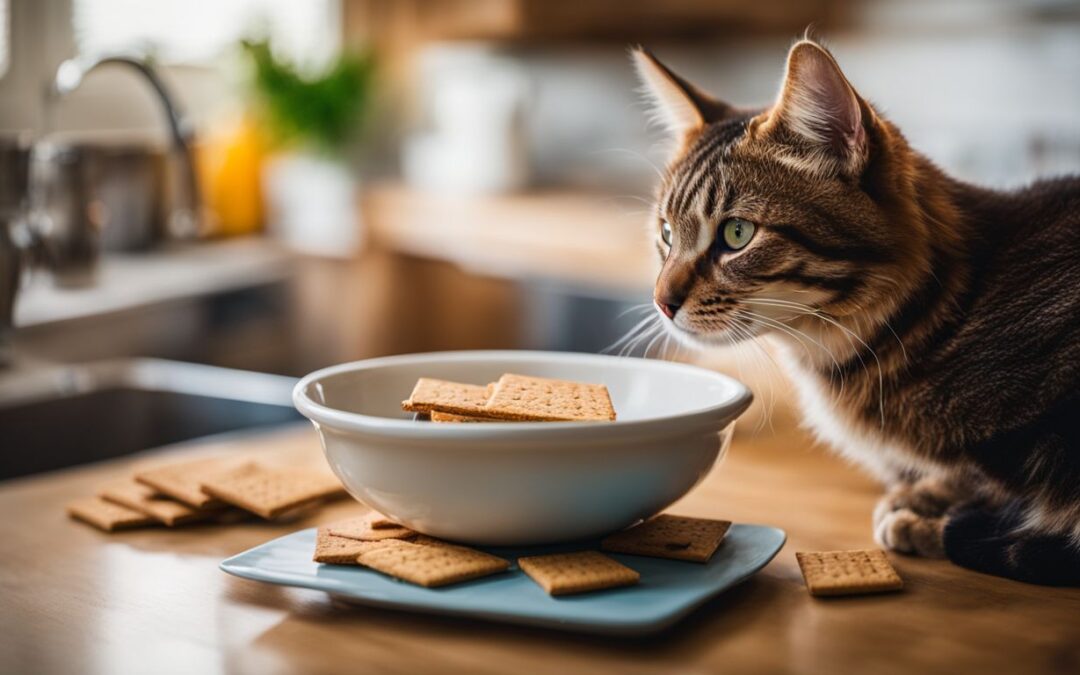Curious whether your furry companion can nibble on some graham crackers? Trust me, you’re not alone in wondering. After a bit of sleuthing, I’ve uncovered some helpful insights. In this article, we’ll delve into the ingredients that make up graham crackers, their potential impact on your cat, and how often—if at all—your feline friend should be enjoying them.
Eager to learn more? Let’s dive right in.
Key Takeaways
- Cats should only eat a small piece of graham cracker once in a while because these snacks don’t offer the nutrients they need.
- Chocolate – flavored graham crackers are harmful to cats and should always be avoided due to chocolate’s toxic effects.
- Graham crackers can lead to weight gain, upset stomachs, or allergic reactions in cats if they eat too much.
Understanding Graham Crackers and Their Ingredients

So, let’s talk about what goes into making graham crackers. These snacks are made with ingredients like whole wheat flour, honey, and a bit of cinnamon for that cozy taste we all love.
Sometimes they throw in raw honey or different flavors to mix things up. But here’s the thing – while none of these ingredients sound bad (and honestly, they’re not toxic to cats), eating too many can cause some issues for our furry friends.
Now, if you’re wondering why your cat might sneak a bite of your snack, it’s not because they love sweets. Cats are obligate carnivores meaning their bodies are built to eat meat—not cookies or anything sweet.
They can’t even taste sweet flavors! Their interest might just be out of curiosity or because the cracker has something else on it that catches their attention. Moving on from what graham crackers are made of let’s check out how these ingredients could affect our feline pals….
Potential Impacts of Graham Crackers on Cats

Moving from what graham crackers are made of, let’s talk about how they might affect our furry friends. Cats and graham crackers aren’t the best match. Eating these snacks can lead to weight gain and obesity in cats.
You see, cats need meat-based diets; their bodies crave proteins and fats, not sugars and carbs found in graham crackers. And oh boy – chocolate-flavored ones? Big no-no! Chocolate is toxic to cats, risking their health if they nibble on them.
Then there’s baking soda and artificial sweeteners often found in these treats – both bad news for kitties. Baking soda can mess with a cat’s tummy while some sweeteners are harmful to cats.
Also, eating too much honey or cinnamon (yes, both non-toxic) could still upset their stomachs resulting in diarrhea or vomiting. Not exactly a party for you or your cat! Plus, without essential nutrients like taurine that come from proper cat food…
well, feeding them human snacks just doesn’t make sense nutritionally-speaking. It’s all fun until someone ends up at the vet’s office because we ignored what our feline friends truly need.
How Often Can Cats Have Graham Crackers?
So, you’re wondering about sharing graham crackers with your furry friend? Here’s the scoop. Cats can safely enjoy about half of a cracker per week—yes, that tiny! And steer clear of chocolate-flavored ones because chocolate is a no-go for cats.
Honestly, sticking to this little bit won’t hurt them. But remember, graham crackers are like treats, not meals.
Keeping it simple is key. Your cat needs protein-rich foods for their main diet. Think of commercial cat food as their go-to meal plan—it’s what keeps them healthy and happy. Tossing them a piece of graham cracker once in a while? Sure, it’s fine as a tiny treat.
Just make sure it doesn’t turn into an everyday thing. Too much could lead to some unwanted allergic reactions or upset their stomachs since these snacks are high in carbohydrates and have next to no nutritional value for our feline pals.
Conclusion
Cats can have a small bite of graham cracker, but never the chocolate kind. Most graham crackers contain safe ingredients like honey and cinnamon, yet too much can harm cats. Cats should stick to their protein-rich diet, staying away from sugary snacks that offer no real nutrition.
Always consult a vet for the best advice on your cat’s diet and health needs—it’s crucial for their well-being! So, keep those kitty treats tailored for them and not humans – it’s what keeps our feline friends happy and healthy.
FAQs
1. Can my cat munch on graham crackers?
Well, here’s the scoop: while your kitty can technically nibble on a bit of graham cracker, it’s not exactly the best snack for them. Cats are carnivores—meat lovers!—so their bodies aren’t built to process foods like graham crackers. Think of it this way… would you eat cat food for a snack? Probably not (I hope!).
2. What if the graham cracker has chocolate on it?
Oh boy, let’s not go there! Chocolate is a big no-no for cats; it’s actually toxic to them. So, if those graham crackers are dunked in or even whispering secrets with chocolate, keep them far away from your furry friend. Seriously, chocolate and cats mix about as well as oil and water.
3. Are there any benefits to feeding my cat graham crackers?
Hmm… how do I put this gently? Nope! While watching your cat try to figure out what to do with a piece of cracker might be cute (or hilarious), there really isn’t any health benefit for them eating something like that. It’s kind of like us eating cardboard—not harmful in small amounts but definitely not beneficial.
4. Any tips on what snacks are safe for cats then?
Absolutely! Stick to treats made specifically for cats—they’re usually packed with proteins and nutrients that cater (pun intended) to their dietary needs. But hey, if you’re feeling adventurous and want to treat your kitty, small bits of cooked chicken or fish can be a nice gourmet option compared to… well, cardboard-tasting graham crackers.






